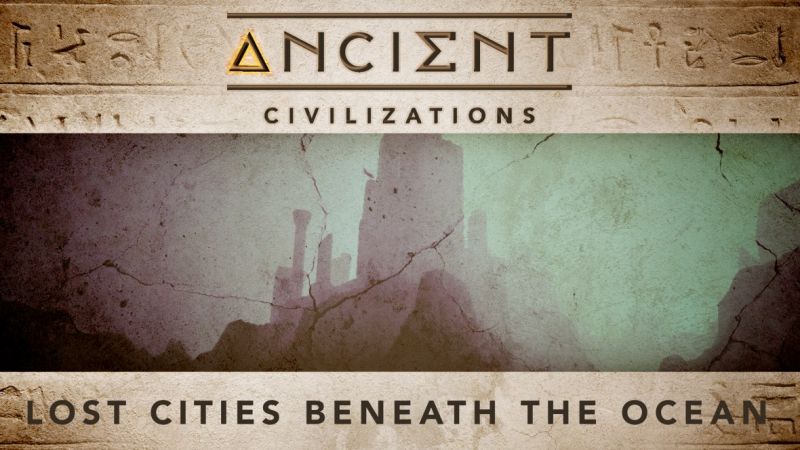Ancient Civilizations – Lost Cities Beneath the Ocean: Arcane accounts from Egypt, Greece, Rome and Sumeria tell startling similar stories of the oceanic destruction of advanced civilizations which vanished into the world’s oceans and forgotten to the ravages of time. New technology scouring the vast depths are discovering the ruins of these lost lands. To the disbelief of established scientific communities, the evidence gathered correlates to surviving tales of an antediluvian world predating the establishment of Göbekli Tepe. These lost cities tell of the ongoing conflict between Enki and Enlil hold the secrets to unlocking the ancient code of human origin and destiny.
Since times immemorial, humankind has searched for the answers to who we are, where we came from and why are we here. Embedded into ancient mythology and our forgotten history, is a code which unlocks our connection with transcendence and paves the way for a new golden age.
Ancient Civilizations – Lost Cities Beneath the Ocean
The antediluvian (alternatively pre-diluvian or pre-flood) period is the time period chronicled in the Bible between the fall of man and the Genesis flood narrative in biblical cosmology. The term was coined by Thomas Browne. The narrative takes up chapters 1–6 (excluding the flood narrative) of the Book of Genesis. The term found its way into early geology and science until the late Victorian era. Colloquially, the term is used to refer to any ancient and murky period.
In the Christian Bible, Hebrew Torah and Islamic Quran, the antediluvian period begins with the Fall of the first man and woman, according to Genesis and ends with the destruction of all life on the earth except those saved with Noah in the ark (Noah and his wife, his three sons and their wives). According to Bishop Ussher’s 17th-century chronology, the antediluvian period lasted for 1656 years, from Creation (some say the fall of man) at 4004 BC to the Flood at 2348 BC. The elements of the narrative include some of the best-known stories in the Bible – the creation, Adam and Eve, and Cain and Abel, followed by the genealogies tracing the descendants of Cain and Seth, the third mentioned son of Adam and Eve. (These genealogies provide the framework for the biblical chronology, in the form “A lived X years and begat B”.)
The Bible speaks of this era as being a time of great wickedness. There were Gibborim (giants) in the earth in those days as well as Nephilim; some Bible translations identify the two as one and the same. The Gibborim were unusually powerful; Genesis calls them “mighty men which were of old, men of renown”. The antediluvian period ended when God sent the Flood to wipe out all life except Noah, his family, and the animals they took with them. Nevertheless, the Nephilim (literally meaning ‘fallen ones’, from the Hebrew root n-f-l ‘to fall’) reappear much later in the biblical narrative, in Numbers 13:31–33 (where the spies sent forth by Moses report that there were Nephilim or “giants” in the promised land).




